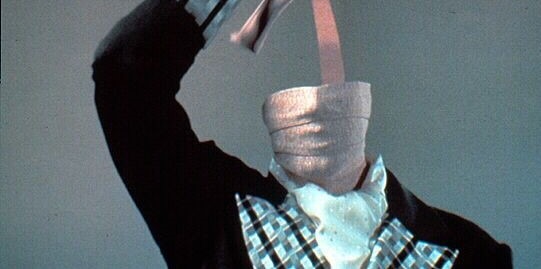‘The Invisible Man’ is full of surprises and shocks
A talent of the best horror films and horror directors is their ability to tease the spectator’s imagination and, to a certain extent, allow them to create the fear for themselves. One of the primary features used to create this feeling is through ambiguity, to allow the spectator to imagine what terrors could be laying in the dark for the characters of the story. But, in The Invisible Man, director Leigh Whannell, the man responsible for conceiving the Saw franchise, turns to empty space as a mediator of those fears. In multiple scenes, the camera will pan to a seemingly empty frame, allowing the spectator to imagine where the threat might be, what the threat might be doing, when the threat will loudly reveal itself.
This feeling, created by the filmmakers, mirrors the narrative at its core. Celicia Kass has escaped from a violent, abusive relationship with an extremely rich optics scientist, Adrian Griffin. The psychological scars still left by this relationship are clear. When she goes outside, the beautiful sounds of birds tweeting turn to a sinister silence – she lives in constant fear that he must be coming for her. However, a crucial piece of news arrives to apparently free her from her turmoil. Adrian is dead. Now, the scars can fade and she can finally move on.
The threat could be anywhere and so the film encourages you to fear empty spaces
As you may have guessed, she can’t. She begins to be haunted, messed with psychologically by a being who is seemingly invisible. Her life begins to deteriorate as those around her begin to think she is crazy, distancing themselves from her, and she begins to fall deeper and deeper into paranoia and insanity. The suspense builds gradually – and brilliantly – throughout the first act, with Whannell repeatedly lingering on empty spaces, teasing the corners of our mind as we wait for what will inevitably arrive. The terrifying but visible threat of the first, gripping sequence is made even more terrifying as now, it can hide in the light, in ‘nothing’. It could be anywhere and so the film encourages you to fear empty spaces, to be constantly afraid of the setting as Cecilia is of her surroundings.
Elizabeth Moss will surely join the club with Toni Collette, Florence Pugh and Lupita Nyong’o by being completely overlooked during award season for excellent performances in a horror film
This suspense-building is immensely well-done. Leigh Whannell has already established his talent for thrills with his previous film, Upgrade, and a talent for twisted innovation with the Saw franchise but here he subverts that intensity, using quietness as a way to exacerbate the unbearable levels of suspense within each set-piece. You wait for the trigger to be pulled and when it does, it comes simultaneously as an act of relief and terror. But the threat isn’t simply used as a tool of suspense. It is used to highlight the psychological terror imparted on Cecilia, as she is gaslighted to the fullest extent of the term. This feeling is brilliantly portrayed by Elizabeth Moss (who will surely join the club with Toni Collette, Florence Pugh and Lupita Nyong’o by being completely overlooked during award season for excellent performances in a horror film) who perfectly captures the culmination of these horrific events. It allows the narrative to move forward with a powerful sense of momentum. Cecilia’s reactions of horror, terror and shock quickly begin to be mirrored on our own faces.
This doesn’t all add up to a perfect film, though. The third act, whilst strangely liberating and cathartic in some moments, leaves some plot holes unfilled, which lingered in the mind after viewing. Benjamin Wallfisch’s score pierces the silence during the suspenseful scenes and is too reliant on unpleasant, distorted ‘bwahs’ that don’t really capture the mood of the film. There are also a few comedic asides that don’t land all that well. When Whannell did it in Upgrade, it fits with that film’s cheesy, pulp vibe. In The Invisible Man, it occasionally lessens the tension of a few scenes. It’s not a huge issue but it can definitely be felt at times.
The mechanical style of Whannell’s previous directorial and screenplay efforts comes together brilliantly to create something so efficiently scary, yet not without its own sense of style
But, in terms of pure suspense, The Invisible Man is one of the most thrilling horror films in recent memory. The mechanical style of Whannell’s previous directorial and screenplay efforts comes together brilliantly to create something so efficiently scary, yet not without its own sense of style. It’s full of surprises and shocks, using your own expectations against you, yet it remains immensely satisfying. Whannell’s innovative direction and his usage of empty space eat away at your imagination, inviting you to place your own fears into the frame. It results in The Invisible Man being a psychologically terrifying and extremely entertaining horror film that, whilst occasionally laboured by its necessity to shock, is absolutely worth a watch.

Comments